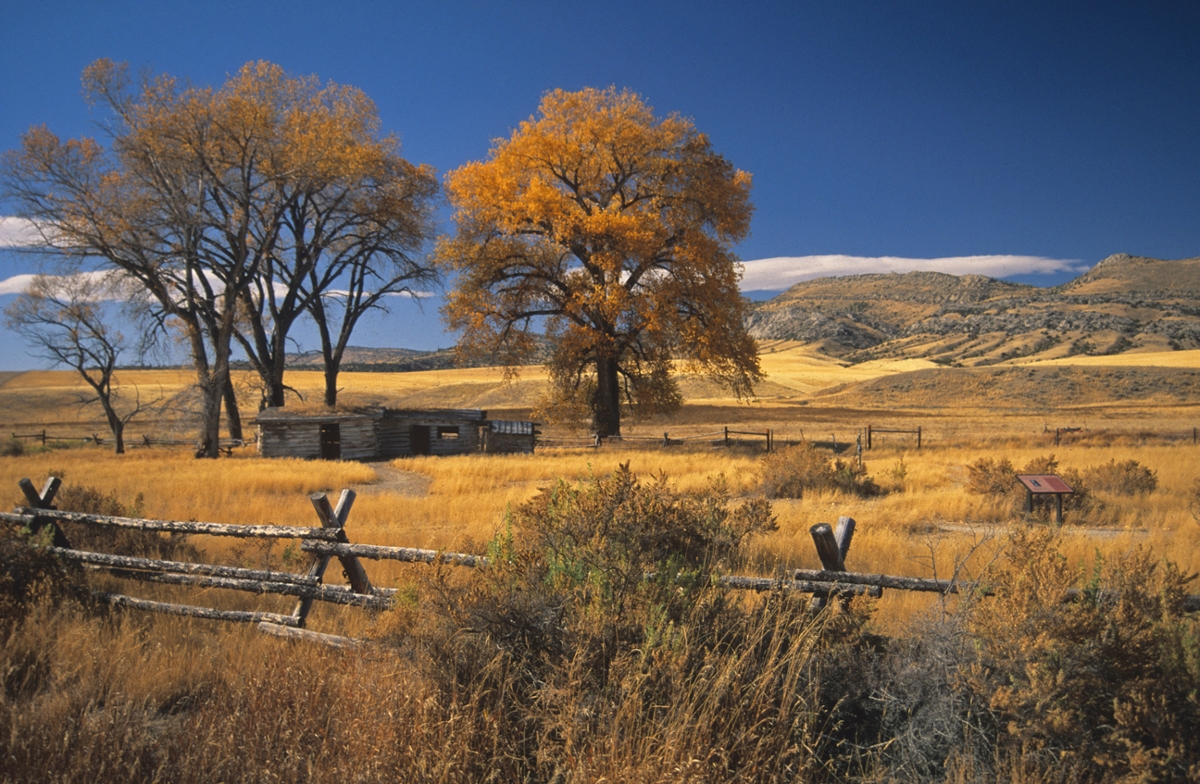Parker Homestead State Park Reveals Bygone Era
 Parker Homestead: Autumn gives a golden cast to Parker Homestead State Park near Three Forks. (Photo by Rick and Susie Graetz)
Parker Homestead: Autumn gives a golden cast to Parker Homestead State Park near Three Forks. (Photo by Rick and Susie Graetz)
“As I looked across the rolling expanse of prairie, filled with the beauty of a Montana sunset, I sent up a little prayer of thanksgiving from my heart for this our very first home. Only a rectangle of prairie sod, raw and untouched by the hands of man, but to us it was a kingdom ....“
...We have no regrets; life is fuller and sweeter through lessons learned in privation, and around our homestead days some of life's fondest memories still cling. We are of Montana, now and always ... I feel that creating a home and raising a family in Montana has been a grand success, and my cup seems filled to overflowing with the sweetness and joy of living.”
– Pearl Price Robertson, a Big Sandy, Mont., homesteader in 1911
Mrs. Robertson's poignant words, part of an interpretive display at Parker Homestead State Park, relate how deeply many early-day settlers felt about their life in Montana.
Parker Homestead State Park is located between two of Montana's most popular state parks, Lewis and Clark Caverns and Missouri Headwaters State Park. It is about 10 miles west of Three Forks on U.S. Highway 287. At less than two acres in size, Parker Homestead represents an important part of Montana's heritage: the Homestead Era of the late 1800's and first 20 years or so of the 1990s. The original Homestead Act, granting 160 acres of land, was established in 1862. For most of the Great Plains, this was far too small to successfully farm. The Enlarged Homestead Act, of which Montana Sen. Joe Dixon played a major role in formulating, passed Congress in 1909, allowing 320 acres of land. It was still not enough, but it was a start.
The boom this new plan brought to Montana was born of railroad hucksterism, false advertising and a total lack of understanding of the land and climate mixed with a huge dose of high hopes and dreams. Thousands of people were lured to Big Sky Country. This episode left a mark on the topography of Montana. Some of the evidence will be with us for a long time to come, but much is already gone.
A display at Parker State Park explains, “the Montana soil is swallowing hundreds of old homestead buildings like this one. Each takes with it untold stories of men and women whose lives brought them drought, blizzards, loneliness and companionship, and fear and simple joys, much like we know today yet sprung from a world that will never be again."
In the 1890's, newlyweds Nelson and Rosa Ellen Parker lived in a small miner’s shack on Antelope Creek. Later, they built a cabin close to the Jefferson River, only to be flooded out. The Parkers and their three young children escaped in a rowboat determined to rebuild on higher ground. In 1901, Nelson filed to homestead on 160 acres and built the two-room, sod-roofed cabin that still stands today.
Sheltered from the summer sun by a small grove of cottonwoods, the log home is testament to the “can-do” attitude so prevalent among our earlier settlers. After the Parkers moved closer to Three Forks, the cabin was empty until 1939, when the Jewett family bought the place and happily raised four children in just three rooms. Eventually, they also left.
While it is important and interesting to know who occupied this place, it is not the real story represented here. Life that once resonated from the Parker cabin was typical of the other rapidly disappearing structures scattered throughout our state. The Parkers and Jewetts carry the banner of so many other families. Visiting the park and reading the excellent and unobtrusive interpretive displays allows one to envision a time in Montana that helped establish some of the strong roots represented by those farm and ranch folks who stuck out the sour end of the Homestead period.
University of Montana | Department of Geography | Rick and Susie Graetz
